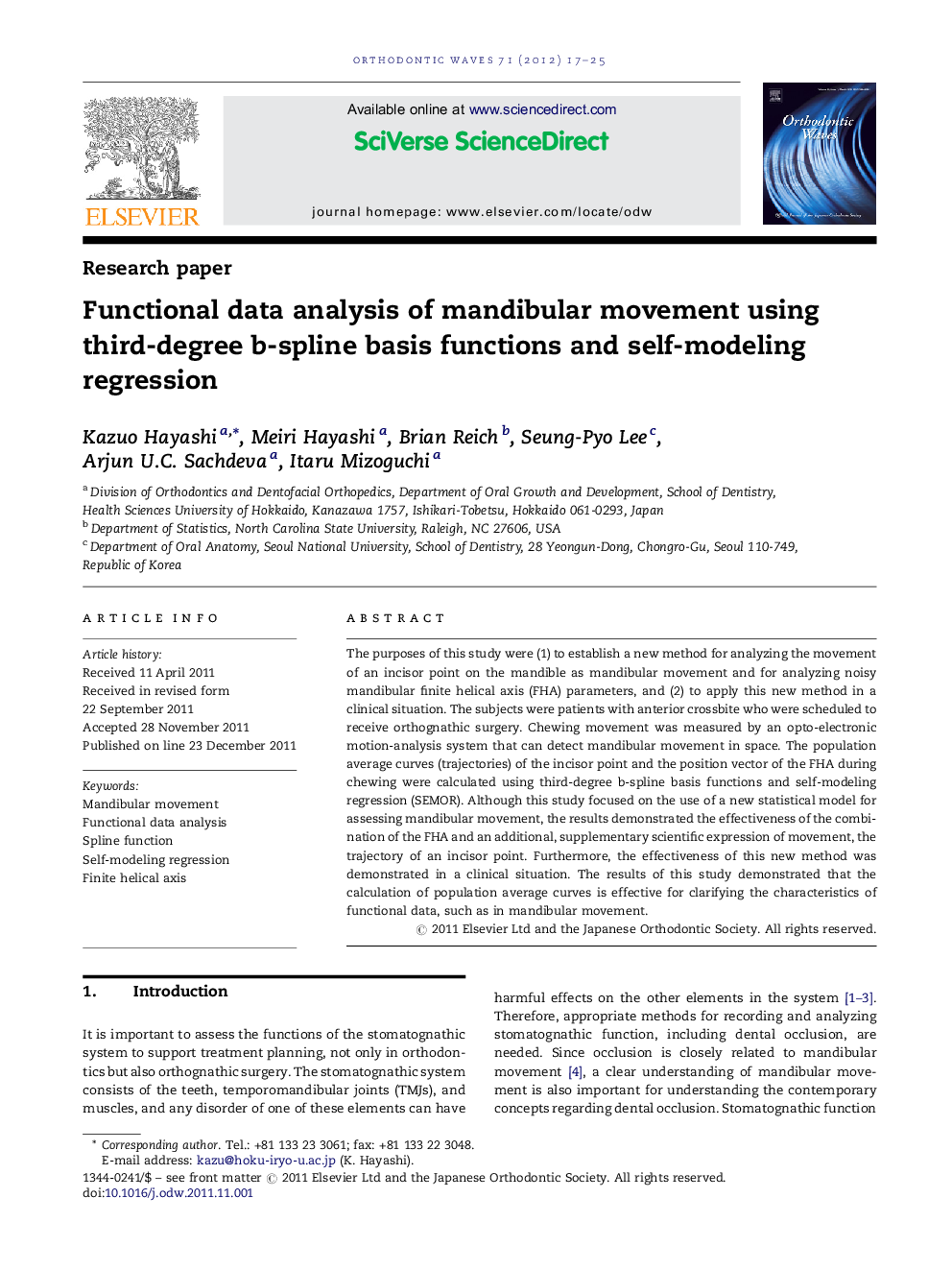| Article ID | Journal | Published Year | Pages | File Type |
|---|---|---|---|---|
| 3170468 | Orthodontic Waves | 2012 | 9 Pages |
The purposes of this study were (1) to establish a new method for analyzing the movement of an incisor point on the mandible as mandibular movement and for analyzing noisy mandibular finite helical axis (FHA) parameters, and (2) to apply this new method in a clinical situation. The subjects were patients with anterior crossbite who were scheduled to receive orthognathic surgery. Chewing movement was measured by an opto-electronic motion-analysis system that can detect mandibular movement in space. The population average curves (trajectories) of the incisor point and the position vector of the FHA during chewing were calculated using third-degree b-spline basis functions and self-modeling regression (SEMOR). Although this study focused on the use of a new statistical model for assessing mandibular movement, the results demonstrated the effectiveness of the combination of the FHA and an additional, supplementary scientific expression of movement, the trajectory of an incisor point. Furthermore, the effectiveness of this new method was demonstrated in a clinical situation. The results of this study demonstrated that the calculation of population average curves is effective for clarifying the characteristics of functional data, such as in mandibular movement.
